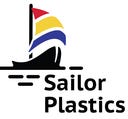Bottle Caps & Closures Guide 101: Everything to Know about It
Have you ever sighed over your crucial document when it got wet? Then it is the right time to replace your plastic bottle caps. A plastic cap or closure can save you from future water bottle leaks and more. Meticulously read this article to know all about it.
The mighty bottle cap encapsulates a vast range of criteria. The vital role of closures & bottle caps is to keep the liquid contents fresh and clean and most importantly inside the bottle. So, there is something that can save you from those unwanted bottle leakages. And bottle caps should be easy to use while allowing the consumers easy access to the concoction or water inside. Are you looking for a plastic bottle closures solution? This guide will give you a better understanding of how manufacturers and suppliers function on a day-to-day basis.
Standard Closure & Bottle Cap Design
You can find an array of bottle caps on the market. They are designed to work with lotions, oils, and creams of varying viscosities. Also, each closure & cap is designed in a way that helps it to work with a dosage in distinct ways. It can be observed via the dimension of the hole or using a silicone release valve. For your ease, you can use a simple screw cap to pour directly from the bottle.
So, are you thinking about which type of closure you should look for next time? Then scroll ahead and make a prudent choice.
Different Kind of Closures Available in the Market
- Sprayers
- CT (continuous thread; screw on)
- Tab-locs
- Corks
- Pumps
- Dispensing
- CR (child resistant)
- TE (Tamper Evident)
Looking at the options can make you feel perplexed. So, pick the one according to your need. Plastic caps manufacturers understand that there is no one-size-fits-all option when it comes to caps & closures. Thus, offering a variety helps them to expand their client base and keep their content.
Caps & Closure Sizes
The closure & cap size varies, for instance, 28/410. In manufacturing or distribution terms, this number has to be the same as the bottleneck size number. The 28 part of it is equal to ’28mm’, the width of the bottle cap, whereas the ‘410’ relates to the height of the cap. Also, the height of the bottleneck can vary based on different caps. This trivia will make you wonder what more you do not know about closure & capsizes. So, the next time 28mm bottle caps for plastic bottles, you should know that there is a gamut of options.
Neck Finish
It is also known as finish. It refers to the height of the closures in millimeters. The Society of Plastic Threads has already established standard thread turns and height.
- 425 = least 2 full turns of threads on a bead finish (minimum)
- 415 = 2 full turns of threads (minimum)
- 410 = 1.5 full turns of threads (minimum)
- 400 = 1 full turn of threads (minimum)
The below encapsulated are the most common finishes
- Lug/Twist
You must have heard of — Twist/Lug” when talking about thread configuration. It is distinguished from a continuous thread and has threads spread equally on the neck’s perimeter. And it has matching threads to engage each thread segments.
- Ratcheted Closures
These types of closures most commonly have ratchet-like“teeth” at the bottom of the closure. When threaded onto a bottle, complete with their corresponding ratchet-like teeth, they engage with each other and make the closure a “non-removable” cap.
3 Top Quality Parameters to Check a Closure
Color Testing
The manufacturer needs to ascertain that the color of caps and closures is uniform during the manufacturing process. If there is a discrepancy in any color beads, then the whole batch of caps and closures needs to be replaced. So, make sure that every batch is color tested.
Cap Fitment To Ensure Leak-proof
It is one place where fit matters the most. This particular test ensures that the cap or closure fits on the top of the container. It is the best and easiest way to make a product leak-proof.
Drop Testing
It is paramount to test the caps by drop testing. In this, you use caps with filled bottles of oils and other concoctions of varied viscosity. Then flip the bottle upside down to conduct the test. If there is any drop leakage, then make the required changes in the manufacturing process.
With Sailor Plastics, you do not need to worry about these factors. Their quality services will keep you content.
